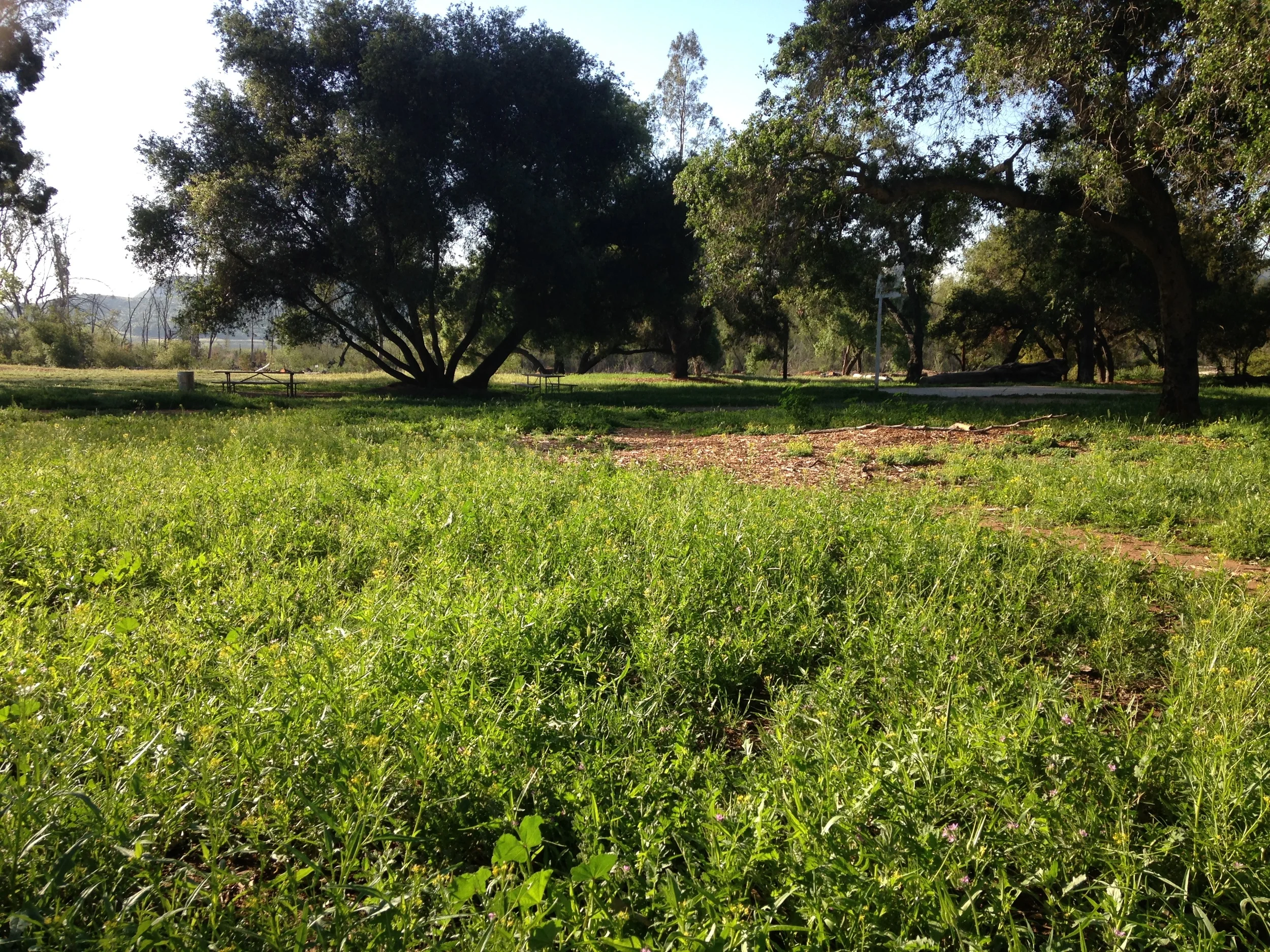With the end of nesting season, we will resume removing Eucalyptus and Tamarisk. We will also be spraying smaller tamarisk, fountain grass, pampas grass. Area of focus will include the lake perimeter. Once the city’s preparation for fire season is complete, castor bean and fountain grass will be addressed along Lake Drive.
Thanks, Garry!
A Success Story for Invasive Control
A hardy band of volunteers hand pulled puncture vine (Tribulus terrestris) along the trail and Lake Drive last year. These prickly seed pods are the bane of mountain bike tires and spread seeds attached to tires and shoes. About 40 ‘man’ hours were volunteered to remove the plants in August 2015. This year, exactly (and only) 8 plants grew in the areas where we worked last year. No other puncture vine plants have been found. Thanks again for a job well done.









